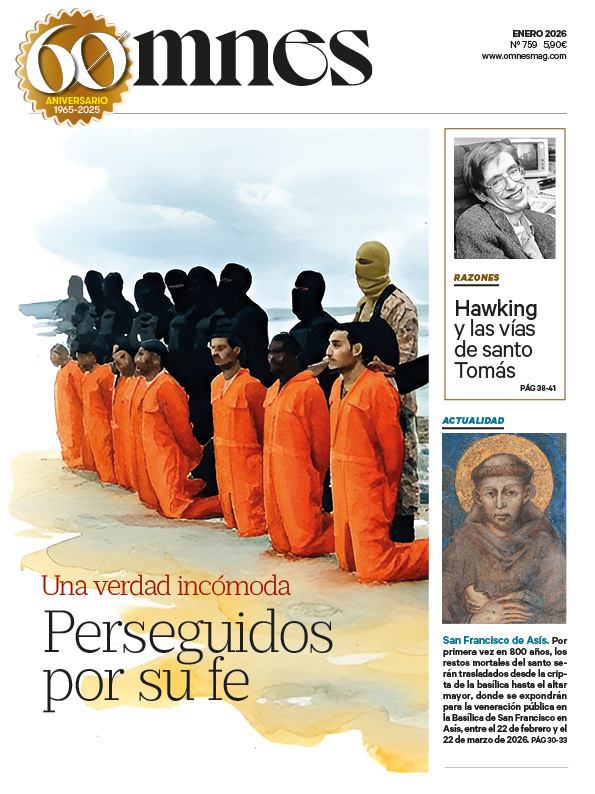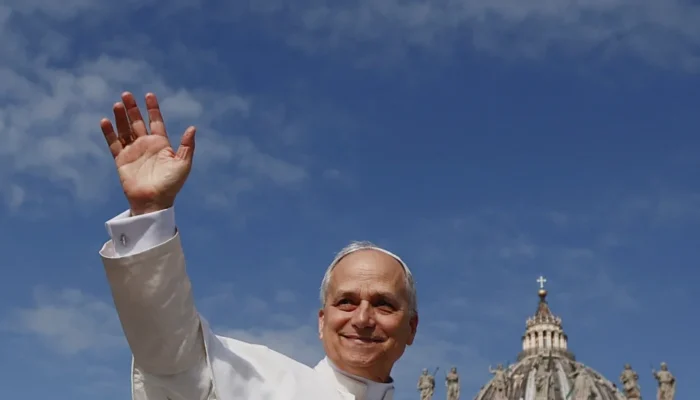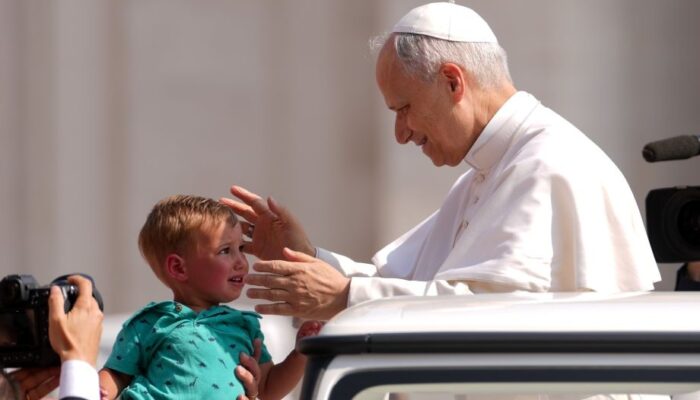The image of the "Virgen Dolorosa del Colegio" transcends the mere category of a work of art to become a living testimony of faith, a source of amazement and a focal point of deep devotion for countless believers.
Its presence is not only that of a painting, but of a venerated symbol that occupies a unique place in the hearts of the faithful, particularly in Quito, Ecuadorwhere he is held in deep esteem and veneration.
The mystique surrounding this painting is intensified by the miraculous event associated with it, a prodigy that transformed it from a revered image into a powerful emblem of divine intervention and maternal care. Through its intricate iconography, the painting communicates deep spiritual truths and intense emotions, setting a tone of reverence and appreciation that invites contemplation.
Unwavering faith in persecution
The image of the Sorrowful Mother, representing Mary's profound suffering, serves as a powerful and enduring symbol of the very trials the Church has faced throughout history. Just as Mary remained steadfast at the foot of the Cross, sharing in the Passion of her Son, the faithful are called to unwavering faith and resilience in the midst of periods of intense persecution.
At the beginning of the 20th century, the Catholic Church in Ecuador suffered a violent and relentless persecution, promoted by the government of Eloy Alfaro and accompanied by militant atheism. This offensive manifested itself in various forms, from the expulsion of bishops and religious orders (Salesians, Capuchins, Jesuits, Redemptorists) to the desecration of sacred places and the murder of religious figures and Catholic journalists.
Among the most regrettable events were the assault on the Archbishop's Palace of Quito, the destruction of the library of the Archdiocese, and the brutal murder of Father Emilio Moscoso at the "San Felipe Neri" school in Riobamba. In this last incident, the regime not only assassinated the rector, but also desecrated the Tabernacle and the consecrated forms, shot at the images of saints and simulated an execution of the Virgin Mary, to finally loot the school.
Persecution was not limited to acts of violence. Laws were implemented that diminished the power and influence of the Church: it was deprived of the property tax, the patronage regime was reestablished, submitting the ecclesiastical administration to the State, cemeteries were secularized, official recognition was withdrawn from religious educational titles and an attempt was made to repeal the decrees of Consecration of the Republic to the Sacred Hearts of Jesus and Mary.
Subsequently, the civil marriage law was issued, which disregarded the legal value of religious marriage and established divorce. The "law of cults" prohibited the foundation of Catholic orders and congregations, suppressed novitiates and dissolved cloistered institutes.
Finally, in 1906, the Catholic Church was stripped of its character as a person of public law and a Police Code was promulgated that repressed all external manifestations of worship.
Our Lady wept for her children
In this context of turmoil and confrontation, the miracle of the Dolorosa in 1906, with the Virgin weeping and blinking on the San Gabriel de Quito schoolThe event took on an even deeper meaning for the Ecuadorian faithful.
Our Lady's tears were interpreted as a sign of her maternal sorrow at seeing the suffering of her children in Ecuador, who were facing the threat to their faith and ecclesiastical institutions. This prodigy reaffirmed Mary's presence and consolation in a time of trial, symbolizing that she "did not want to leave her children" in the midst of the adversity and persecution experienced by the Church in the country.
Witnesses, including my great-grandfather and his brother, described how the Virgin opened and closed her eyes, an active movement that added to the unusual nature of the event.
The rapid validation by the Vatican in the same year underscores that the Church perceived this event not only as a local occurrence, but as a divine affirmation of faith and maternal care at a time of growing skepticism.
This event manifested itself as a universal message of hope and consolation from the Mother of God, a tangible sign that she "did not want to leave her children" in the face of the challenges and turmoil of the times, reinforcing the spiritual connection between Mary and the faithful.
Serenity in the face of pain
When contemplating the face of the Sorrowful Virgin, the first impression is that of "deep suffering". This is the most striking expression conveyed by the painting. However, this pain has a paradoxical nature: it is a "serene and strong pain".
It is not a passing sadness or overwhelming despair, but a deep and abiding affliction tempered by acceptance, fortitude and divine will. It speaks of a sorrow that does not annihilate, but uplifts.
The representation of Mary's suffering in the face of the Sorrowful Virgin, characterized by her serenity and strength, goes beyond the mere expression of human affliction.
This iconography underscores a profound theological affirmation: Mary's sorrow is not a sterile sadness, but an act of unconditional and sacrificial love, a perfect empathy with the agony of her Son. Her suffering is presented as salvific, not hopeless, offering a model for believers to embrace suffering with grace and spiritual meaning.
This approach resonates with the realization that "every pain accepted out of love for Him and united with His passion becomes a salvific, meaningful pain." In this way, the representation elevates her pain from a purely human tragedy to a conscious and active participation in the divine plan of salvation.
The distinction between sadness and love is crucial: "it is not sadness but love that accompanies her Son to the end". Her suffering is an act of unconditional and sacrificial love, a perfect empathy with the agony of her Son, persevering with Him to the end.
Despite the immense suffering she represents, "her gaze conveys peace and love". Her eyes, despite the tears, radiate an inexplicable inner tranquility and boundless compassion. This gaze invites contemplation and offers comfort, assuring the viewer of her enduring maternal care.
The pierced heart
A central iconographic element of the "Mater Dolorosa" is the representation of her chest adorned with "seven swords, symbolizing her seven sorrows". This image of Mary with her heart pierced by swords (often one or seven) is a well-established tradition for the Sorrowful Mother. This visual representation is derived directly from the prophecy of Simeon, who foretold that "a sword will pierce your soul."
The Prophecy of Simeon, Mary's first sorrow, establishes a fundamental starting point for her role in salvation history. The prediction that "a sword will pierce your soul" is not only a harbinger of future afflictions, but a spiritual pang that marks Mary's soul from the very beginning of Jesus' life. This prophecy provides the direct theological justification for the visual representation of the seven swords.
This initial sorrow consecrates Mary's unique and active role as the "Mater Dolorosa," whose suffering is intrinsically linked to the redemptive work of her Son. It underscores that her suffering was not accidental, but divinely ordained and integral to the plan of salvation, positioning her as co-redeemer with Christ from her infancy, not only at the foot of the Cross.
The Seven Sorrows of Mary are a set of events in her life that are the object of popular devotion and are frequently represented in art. These sorrows should not be confused with the five sorrowful mysteries of the Rosary.
The widespread devotion to the Seven Sorrows, with roots in the Middle Ages and its expression in the "Stabat Mater" attributed to Jacopone of Todi, as well as its liturgical celebration on dates such as "Friday of Sorrows" and September 15, reveals that the Dolorosa is more than an artistic representation. It is a living devotion that promises tangible spiritual benefits to the faithful.
The iconography of the seven swords becomes an invitation to participation in Mary's sorrows, offering a path to deeper faith, greater understanding and divine consolation. This reinforces Mary's active maternal role in the lives of her "children," demonstrating that her suffering is a source of grace and a model for transforming one's own pain into salvific suffering by uniting it to the Passion of Christ.
Hands that hold out hope
The hands of the Sorrowful Virgin are an element of great expressiveness in the painting, described with deep admiration: "Her hands are beautiful. Hard-working: wide and long. They make me fall in love with them."
This description evokes not only beauty, but also a history of service, care and endurance. These are not delicate or inactive hands, but hands that have actively served, nurtured, comforted and suffered.
They symbolize Mary's constant and active participation in the life of her Son, from his infancy (cradling him) to his death (receiving his body). They are hands that have performed countless acts of maternal care, have endured immense pain and yet remain capable of offering comfort and holding the instruments of salvation.
The depiction of the Virgin's hands as "workers: broad and long" suggests a capacity for service and action, beyond mere passive reception. The act of holding the instruments of Christ's Passion, such as the nails and crown of thorns, is a deliberate iconographic choice found in depictions of lamentation.
This not only illustrates Mary's sorrow, but her active participation in the drama of redemption. Her hands, which once cradled the Child Jesus, now present the symbols of her supreme sacrifice, signifying her complete identification with the mission of her Son and her unwavering maternal love that "accompanies to the end."
In her left hand, the Virgin holds the three crucifixion nails. These are direct, tangible and visceral symbols of Christ's Passion. They represent the brutal instruments of his sacrifice and, by extension, Mary's profound co-redemption in witnessing his agony.
The presence of the nails in her hand connects her directly to the physical reality of her Son's death. In her right hand, she holds a crown of thorns. This symbol of humiliation, unbearable pain and mocked royalty further emphasizes the brutality and indignity of Christ's Passion.
His presence in Mary's hand signifies his intimate connection with her suffering and his willingness to embrace the full scope of his redemptive sacrifice.
A mother who never gives up
The Sorrowful Virgin of the College stands as a beacon of faith, a canvas that tells a story of unwavering love and divine resilience. Through the miracle of 1906, her serene face in the midst of the deepest pain, and the seven swords symbolizing her sufferings, as well as the hands holding the instruments of the Passion, the essence of her motherhood is revealed.
This painting not only commemorates Mary's suffering in accompanying her Son to the end, but also embodies the strength of the Church in the face of persecution.
The Sorrowful Virgin is a perpetual reminder that pain, when accepted with love and united to the Passion of Christ, acquires a salvific meaning. Her gaze, which conveys peace and love, assures the faithful of her constant presence and intercession.
She remains a perfect model of faith and perseverance in suffering, a perpetual source of comfort and strength for those who turn to her. Her image invites contemplation, gratitude and renewed spiritual connection, carrying her message of enduring love and hope in the heart of every believer.







